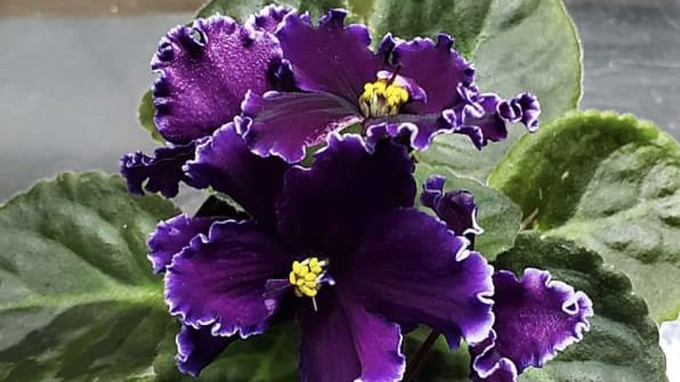
Find hundreds of indoor plants in rare varieties at Shepard Center event

This beautiful specimen is an example of the African violets that will be on display this weekend. Photo courtesy Delta Gesneriad and African Violet Society
They rank among Sacramento’s favorite indoor flowering plants, beloved by collectors for generations.
And this weekend, they’re in the local gardening spotlight.
On Saturday and Sunday (Sept. 16 and 17), the Delta Gesneriad and African Violet Society will host its annual show and sale at Shepard Garden and Arts Center in McKinley Park. It’s a wonderful opportunity to see these blooming plants at their peak of beauty – and take some home, too.
African violets are the best-known gesneriads, which includes more than 1,500 species. Also popular are gloxinias, cape primroses, kohlerias, episcias and achimenes. All these tropical plants make themselves at home indoors and produce striking flowers in a rainbow of hues.
Besides their attractive flowers, gesneriads also are known for their interesting foliage. Specimen plants can live for decades. This show will have several examples of how gorgeous these plants can be.
In addition at this event, the club offers hundreds of young plants for sale including dozens of rare varieties unavailable from local nurseries. It’s a fantastic opportunity to add to your own indoor jungle. Come early for best selection.
Get advice, too. Several club members will be on hand to offer advice on repotting older plants and violet care.
Show and sale hours are 1 to 4 p.m. Saturday and 10 a.m. to 2 p.m. Sunday. Admission and parking are free. Shepard Center is located at 3330 McKinley Blvd., Sacramento.
Details and directions: www.sgaac.org.
Comments
0 comments have been posted.Sacramento Digs Gardening to your inbox.
Sites We Like
Garden Checklist for week of April 21
This week there’s plenty to keep gardeners busy. With no rain in the immediate forecast, remember to irrigate any new transplants.
* Weed, weed, weed! Get them before they flower and go to seed.
* April is the last chance to plant citrus trees such as dwarf orange, lemon and kumquat. These trees also look good in landscaping and provide fresh fruit in winter.
* Smell orange blossoms? Feed citrus trees with a low dose of balanced fertilizer (such as 10-10-10) during bloom to help set fruit. Keep an eye out for ants.
* Apply slow-release fertilizer to the lawn.
* Thoroughly clean debris from the bottom of outdoor ponds or fountains.
* Spring brings a flush of rapid growth, and that means your garden is really hungry. Feed shrubs and trees with a slow-release fertilizer. Or mulch with a 1-inch layer of compost.
* Azaleas and camellias looking a little yellow? If leaves are turning yellow between the veins, give them a boost with chelated iron.
* Trim dead flowers but not leaves from spring-flowering bulbs such as daffodils and tulips. Those leaves gather energy to create next year's flowers. Also, give the bulbs a fertilizer boost after bloom.
* Pinch chrysanthemums back to 12 inches for fall flowers. Cut old stems to the ground.
* Mulch around plants to conserve moisture and control weeds.
* From seed, plant beans, beets, cantaloupes, carrots, corn, cucumbers, melons, radishes and squash.
* Plant onion sets.
* In the flower garden, plant seeds for asters, cosmos, celosia, marigolds, salvia, sunflowers and zinnias.
* Transplant petunias, zinnias, geraniums and other summer bloomers.
* Plant perennials and dahlia tubers for summer bloom.
* Mid to late April is about the last chance to plant summer bulbs, such as gladiolus and tuberous begonias.
* Transplant lettuce seedlings. Choose varieties that mature quickly such as loose leaf.